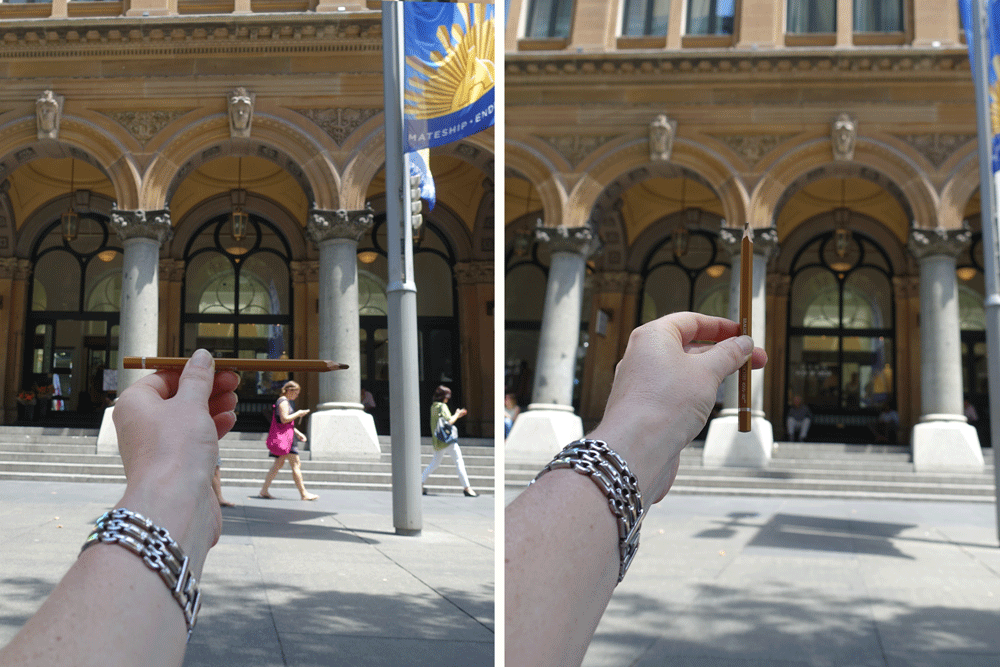
This week in the Foundations re-run we are looking at how to sight measure and create more accurate sketches.
I did a heap of bonus videos including one on foreshortening. I will share this as a separate article soon, but if you want a preview check out my Instagram post.
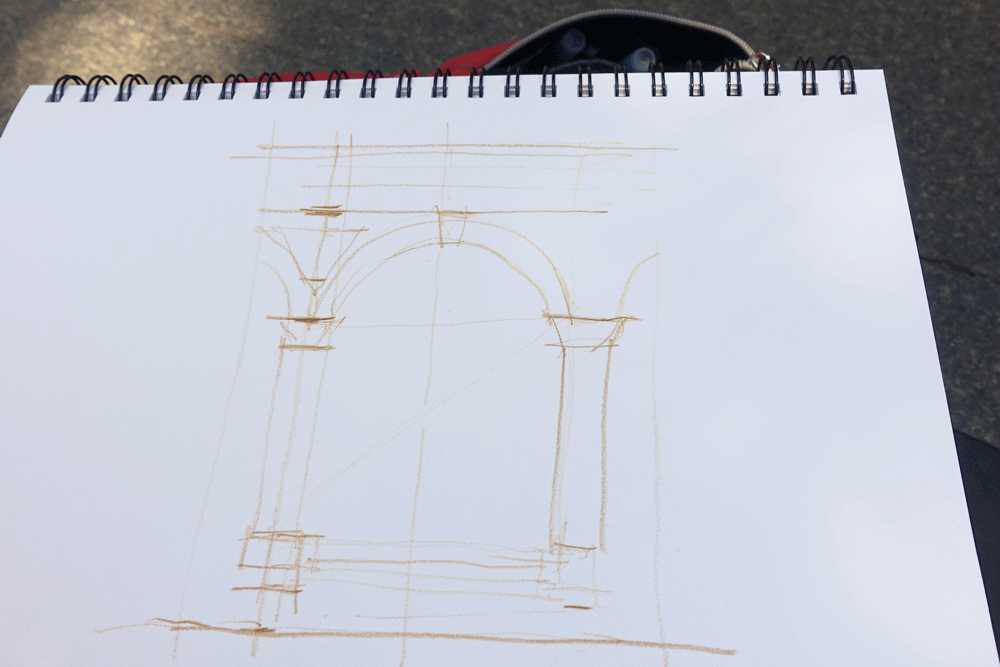
Rather than sharing a heap of my own sketches (as I have done for edges, shapes and volumes) I thought it would be fun to ask you for your thoughts (and hope to get a little interaction!)
So my questions are:
- Do you do much measuring when you sketch?
- If yes, how much? If no, why not?
- Do you know how to sight-measure? (it’s totally ok to admit that you don’t, as I come across many sketchers who have never properly learnt how to do it?)
- Do you use any set-up lines? Do you use pencil to record these measurements on the page? Or do you go straight to ink?

I used to do a lot more measuring in years past, but these days I do very little. I basically just measure the overall length and width of a scene and then sub-divide by eye. As for the tool I use for setup, I mainly use paint some lines with a very watery wash.
But historically I did a lot more measuring and drew some basic setup lines. I used a 2H pencil and then changed to red mechanical lead (more about my redlines here) and then to a brown ochre watercolour pencil line. What does this say about the evolution of my work?
Really looking forward to hearing about your measuring and setup lines. Please share!




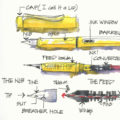
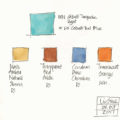
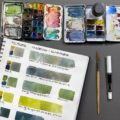
15 Comments
I do less and less measuring…basically because I am lazy…..a little sight measuring…and minimal setup lines using the brown ochre watercolour pencil as recommended by you. I TRY to remember to,put in my eyeline, but often forget……as I am very bad at ascertaining exactly WHERE my eyeline is! Usually judged to be too high or too low!
Hi Anne Marie – well I understand the less and less part… but if you only do one thing I would suggest it’s ‘nailing the eyeline’ = that is the single most important thing to do for the accuracy of your sketches.
Yes and no. I don’t often do a pencil presketch or physical lines, but I think that I mentally assess measurements, half, third of the way up, lines up with …, which of course accounts for the, shall I confess, endearing wonkiness, of many of my sketches, and that may be a part of my style. I don’t feel adept at sight measuring, or Perhaps I don’t really know how to do it properly. I think I tend to mentally set outside boundaries and then subdivide inside and mostly do relational comparisons for size, length, angles. I keep meaning to dig out a brown ocher WC pencil. I don’t like regular pencils because I end up with messy graphite smudges. I tend to do more pen and ink before watercolor, but know that slows me down and tempts me into intricate details. I am trying to start with soft watercolor line setups, but have to mentally force myself to start that way. It’s a conundrum. I love minute details, but would love to work faster and freer.
HI Cheryl – I follow along with your comments (I hate pencil smudges too) thanks for sharing
I am dreading lesson 5 (I’m starting to lag behind!!). I just don’t like measuring. But my sketches clearly show that I need to measure more!! And yet, when I did Foundations in Autumn 2016, it was one of the big HaHa moments for me, when you explained the concept of minimal setup! So I must not listen to the voice in my head, and simply finish lesson 4 and do lesson 5!! I know it will be worth it!!
Hi Marie-Helene. Ha! I understand the dread… but it’s not that bad! Seriously! 🙂
I do a moderate amount of measuring, but only for major volumes or elements. Past a certain point I’m just winging it with the angle of windows and using the lines I already have as a guide. I go straight in with ink… no pencil. That has as much to do with personal philosophy as practicality, but it is quicker. I have learned to use dots, however to check proportions and angles. Instead of pencil lines I put down a series of dots at important points or heights and make any adjustments based on the dot skeleton. It’s interesting that the mind can fill in the shapes of the volumes just with dots! These dots rarely show up very much on my final drawings.
A point of curiosity… does anyone find that sitting over your work as opposed to slightly behind it (as at a very high table) affects your ability get your drawing correct? I tend to do a better job at angle accuracy with the sketch more or less on my lap and looking down…
Hi John, I have never mastered using dots – so glad that it works for you.
Are you saying that a more top down view is easier – yes! I would agree with that.
I do one quick measurement of the height and width of the building and place 4 ink dots on the page. I then go straight to pen and hope for the best. I have become lazy and enjoying doing front or elevation views of a building. So this system generally works for me. It also works for 2 point perspective. I do have problems with windows and doors with the dots. It probably wouldn’t hurt to pencil these in when working on 2 point perspective.
HI Carmel – elevational sketches are so relaxing aren’t they – but don’t think you are lazy for doing them 🙂 Any sketching is good and it helps train your proportion and confidence for 2 point perspective. But it’s always good to check and do a more complete measured drawing every now and then
As a new sketcher, I find a bit of pencil setup helpful (although I can end up doing too much before I shift to pen). I just sketched a scene out a window and used line set up for the window and shape setup for the location of the trees The latter was terrific as it was so minimal but kept me on track in terms of relationships. I do some measuring (just sighting with a pencil) which is very helpful with proportions, but aware that It would help to measure more.
I have been trying to learn to use the Rosemary & Co. dagger brush that you like so much. I find that my strokes are a bit jerky and uneven compared to a round brush. Do you have tips for mastering the use of the dagger brush?
Hi Marjorie – I have a lot of videos inside my courses where I demonstrate it. But the no. 1 tip is to use it ‘upside down’ and it’s much easier to control.
PS. check out the Livestream replays inside Foundations – the timestamps should help you find demos in the dagger brush. THere is a specific video inside Watercolour
i’ve never thought of systematically measuring until watching Foundations lesson 5 although I have often found myself inadvertently thinking in terms of squares: my brain always looks at a vertical line and tries to think how far across it would reach if it closed down to the horizontal, which is technically ‘square’ thinking, albeit in a slightly weird roundabout way.
I found it very helpful your tip in the bonus section on measuring horizontals and verticals with ‘plumblines’ rather than measuring angles – i think I will use that a lot from now on..
I do use setup lines but very very quickly tend to go into too much detail – I’ve also been using a red mechanical pencil but am finding it a bit much lately. Tried a watercolour pencil but it seems to bleed too much later if I add colour..
But maybe I’ll try the very watery paint lines for a change.. that way I’m also less likely to overdo the detail as it would be totally impossible 😀
NEWSLETTER
Subscribe for first notification of workshop + online classes and more.